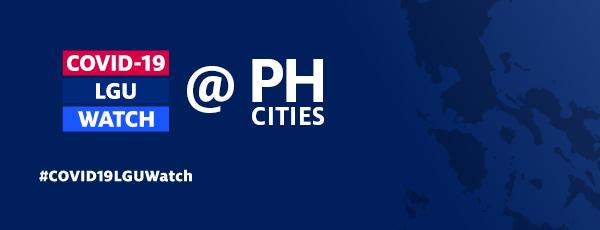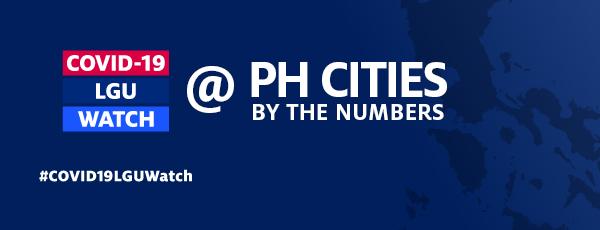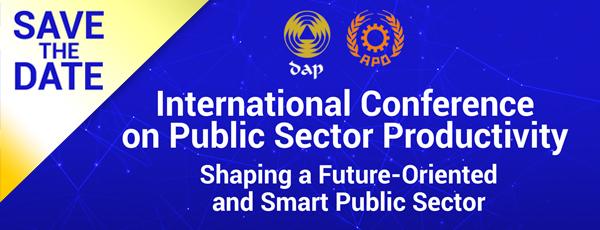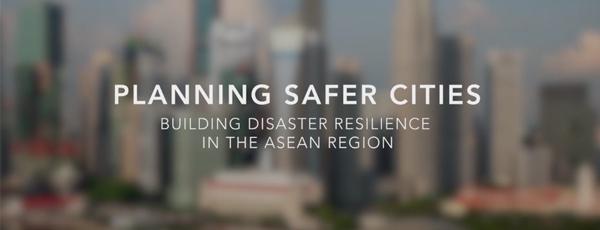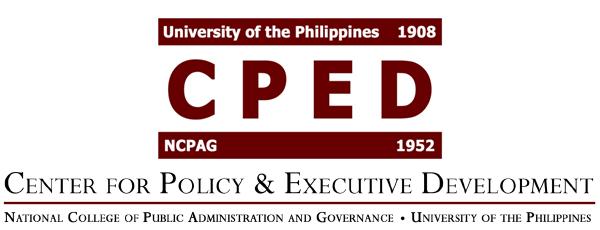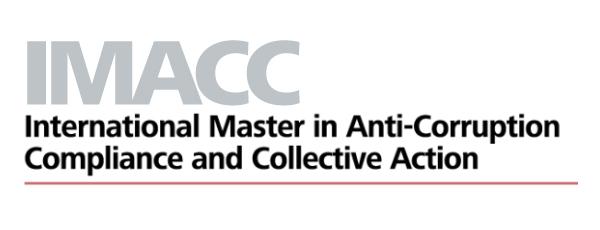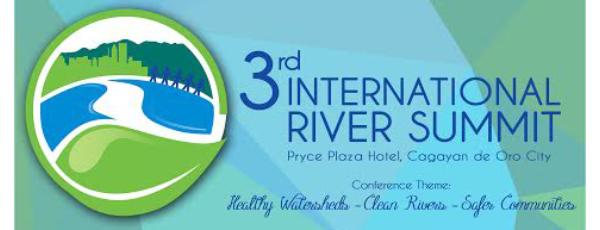



Water Tanks and The City
By Paulie Mora
May 7, 2013 - Science City of Munoz
Landlocked by the vast rice plains in Central Luzon is the Science City of Munoz, a four-hour ride from the Philippine capital of Manila. The Science City, a first of its kind in the country, is home to the country's foremost agricultural research and development centers like the Philippine Carabao Center, Philippine Rice Research Institute and Philippine-Sino Center for Agricultural Technology among others. Many students and researchers in droves come into the city to experiment new ways in increasing food production.
Muñoz has been a relatively low-income or a fourth class city. Data from the 2005 Community Based Monitoring System (CBMS) reveal that almost 60 percent of its households have income below poverty threshold1. The National Statistical Coordination Board (NSCB) reported a 21.4 percent poverty incidence rate2, the poorest among cities in Nueva Ecija province. The City is dependent on its agricultural production with its big number of agriculture-based services.
In 2002, the Millennium Development Goals (MDGs) became a buzzword for development programs. The Philippines with 181 countries signed the universally-agreed set of eight goals and committed to the 2015 deadline. The MDGs prescribe what to target ranging from decreasing poverty rate, closing the gender gap between women and men, and fully enrolling girls and boys in schools, among others.
One of the MDG articulated is Goal No. 7, which is Ensuring Environmental Sustainability. In its sub-goals, each country needs to halve the proportion of its households without access to safe drinking water and sanitation. The Philippines targets 79.6 million or 86.6\\\% of its 92 million population to have access to safe water by 2015.
On a positive note, the Government is reporting that the country is on track in meeting the 86.6\\\% target. From 73.8 percent in 1998, the National Statistics Office reported an increase to 81.4\\\% water coverage in 2008. Asian Development Bank (ADB) cited that 85\\\% the country is already being supplied with potable water.
In terms of water service delivery, local government units and community-based organizations comprise the biggest provider accounting for 55\\\% of those people with access to water. In terms of number of people served, the barangay water and sanitation association (BAWASAs) are the largest service providers.
Current national situation of water supply coverage, however, were conflicting, the World Bank said.
The Philippine Water Supply Sector Roadmap3 reports that of the 80.2\\\% water coverage in the country (based on 2004 NSO Poverty Estimates), only 44\\\% are connected to Level III system meaning that each house has an individual household faucet.
There are three levels of water service coverage - Level I which is a point source like a protected well or a developed spring that is mostly found in far-flung rural areas. Level II which is a communal faucet shared by at least four to six households suitable in urban and rural areas where houses are clustered. Level III has a system with a source, a reservoir and a piped distribution system with a minimum treatment of disinfection. Level III is considered to be the safest source of water.
NSCB said that one in five or the remaining 18.6\\\% of the population (or an estimated 15 million) is still unable to access safe water. Particularly in the rural areas, disparity between urban-rural areas has largely maintained all throughout the years. The Philippine Institute for Development Studies said that although access to safe drinking water increased to 96\\\% in urban areas, those in the rural areas rose to only 88\\\%.
Eric Tubalinal, the City Planning and Development Officer (CPDO), recalled that drinking safe water became a major concern for the residents since most were getting supply from the communal water pumps or from the neighbor's pitcher type manual pumps especially in rural barangays. Series of village consultations reinforced that residents needed the Level III water supply system addressing access to safe and clean water especially during the dry season when shallow aquifers are usually parched. Tubalinal said that MDG No. 7 served as an important platform for the city when it committed to localize different MDGT targets in a bid to address the local poverty.

A patubig project is not entirely new to local governments. The Local Government Code devolves to local governments the responsibility- from planning to implementation - of water supply system among other basic services. Local governments can establish a water service provider in the form of water districts, BAWASAs, or cooperatives to supply their waterless barangay. 'Waterless' barangays have less than 50\\\% water service coverage.
The City first thought of Local Water Utilities Administration (LWUA) to provide and upgrade water service to other barangays. LWUA is a government-owned and controlled operation that provides loans and develops local water districts in cities and municipalities. Tubalinal said LWUA has been serving the city's 13 urban barangays.
Tubalinal however said LWUA did not have the capacity to expand due to economic feasibility. The City had weighed the pros and cons. If water district-managed, a likely high cost of piped water per cubic meter will be imposed. For a rural barangay of mostly farmers, to avail a high price is not likely feasible. If a community-based water system will be set-up, who will manage its day-to-day operations. The City wanted a water program that will instill community ownership and sustain the long-term efforts.
The urgency however pushed the city to set up BAWASAs with Level III potable water system. The BAWASA would be later renamed as Tugon sa Usbong ng Buhay, Inuming Tubig ang Gabay (TUBIG) project becoming the City's better performing local programs.
TUBIG Chairman Edwin Lacambra of Rizal, the TUBIG's pilot barangay of 1,383 population, said it was not easy to start TUBIG. The first TUBIG project was in 2003. An initial capital of Php 1.6 million was spent from setting up a water tank to the laying down of water pipe lines. The local government funded the initial set-up. Community members, mostly of local leaders, provided the sweat equity. Timely for barangay Rizal, a community member donated a water tank. It now stands within the periphery of Rizal's elementary school. "We had a series of seminar at LWUA and the city's engineering and the planning offices set up the connection. We based our standards from LWUA," he added.
TUBIG Chairman Edwin Lacambra of Rizal, the TUBIG's pilot barangay of 1,383 population, said it was not easy to start TUBIG. The first TUBIG project was in 2003. An initial capital of Php 1.6 million was spent from setting up a water tank to the laying down of water pipe lines. The local government funded the initial set-up. Community members, mostly of local leaders, provided the sweat equity. Timely for barangay Rizal, a community member donated a water tank. It now stands within the periphery of Rizal's elementary school. "We had a series of seminar at LWUA and the city's engineering and the planning offices set up the connection. We based our standards from LWUA," he added.
Despite the seemingly low price for its consumers, Lacambra finds it hard to collect monthly fees, 'we have lean months because some farmers do not have work in the field. Sometimes, we do not incur savings and we have to wait for months until people pay." To cite a case, in Rizal TUBIG consolidated 2011 Statement of Income and Expenses, Rizal TUBIG registered an income loss at Php 64, 681.99. But in the first quarter of 2012, they already have a positive net income at Php 7,212.38 owing to the double increase in total collected water sales from the previous month.
 Lacambra said that Rizal TUBIG Board has a policy on the non-payment. For the non-payment of the previous month's bill, residents are given a grace period of 15 to 45 days before the Board decides to padlock the water meter. He admits though that some residents are allowed to still access water for "humanitarian" reasons.
Lacambra said that Rizal TUBIG Board has a policy on the non-payment. For the non-payment of the previous month's bill, residents are given a grace period of 15 to 45 days before the Board decides to padlock the water meter. He admits though that some residents are allowed to still access water for "humanitarian" reasons.
Lacambra has been the chair of the Board for six years. A year after the city government set-up the TUBIG, community members elected a chairperson and other members into the new board. The Board steers policy directions and manages the daily operations of TUBIG. In the case of Rizal, its barangay officials became default board members until such time that community members elected Lacambra and other new members.
Barangay officials and other community-based organizations members may also seat in the Board but they may not take its leadership. Barangay officials will only have an advisory role in the decision-making process of the Board. In its infancy stage, once the officials of the new Board had been elected, a project coordinator assigned by the city mayor will help in the smooth transition and help build consensus in creating new policies for the Board. This is where CPDO Tubalinal comes in.
Here are some of the major activities the City undertakes:
- Consultative meetings from the barangay to know the primary needs;
- Construction and installation of water work system;
- Institutional development/ trainings of the representatives of the multi-sectoral groups who would handle the project management;
- Tenure of management office � One (1) year, after which an election of officers shall be conducted, based on their existing by-laws. During the initial year of operation of the system, the LGU shall assign a project coordinator to monitor, assist the management, and to ensure the smooth implementation of the said project. The project coordinator shall be automatically an ex-officio member of the Board of Directors;
- Training and seminar - The LWUA Muñoz Water District shall be requested to provide a series of management systems and policies/trainings/seminars to the association. If necessary, a cross visitation to the other project is necessary.
High cost of piped water provided by water district Each TUBIG site underwent the same process facilitated by the CPDO. Several concerns as to the willingness of the residents to pay, how much fees to be charged, should there be a uniform pricing and what is the type of Level III connection can be modeled are comprehensively discussed.
Each TUBIG site underwent the same process facilitated by the CPDO. Several concerns as to the willingness of the residents to pay, how much fees to be charged, should there be a uniform pricing and what is the type of Level III connection can be modeled are comprehensively discussed.
Today, TUBIG project has expanded to 15 rural barangays in the city's 45 barangays benefiting 2,500 households.
Tubalinal said that the TUBIG project has increased the potential of the organizations to come up with more innovations and to enable them to learn one another. The beauty of the program is its ownership where the people in the barangay totally manage the affairs of the water system.
Not just providing access to safe water, TUBIG has also begun helping in other community activities. In last year's city-wide search for the cleanest barangay, TUBIG San Antonio, another site, donated cans of paint to replenish the fences. Tulong tulong dito sa barangay namin. Hindi kami mananalo sa Clean and Green kung hindi kami tulong-tulong kaya nagkaroon kami ng ambulansya (as a prize for the City's Search for Clean and Green) dito sa barangay. Ganoon din sa school, nagdonate kami ng compost pit. Nagkaroon din kami ng feeding program, bumili ng vitamins sa mga malnourished. We give 10\\\% discount for senior citizens and we only charge a minimum payment for those who experience recent death in the family, said Florencia Juico, TUBIG San Antonio operations manager.
San Antonio TUBIG started operation in 2005. It is currently serving 249 households and is now one of the most stable among TUBIG sites. Juico said that San Antonio TUBIG is expanding. We are expanding to other households in other barangays who are willing. We are also planning to put up a water refilling station but the capital for the equipment can be expensive but the city office said it can be a conflict for the TUBIG project. She also said that the barangay council is contemplating to impose real property tax and applicable fees on San Antonio TUBIG.
Former City Mayor Nestor Alvarez, the pioneering architect of the TUBIG project, recognized however that there are different management models and complexities existing on the ground. One Tubig site was an NGO-managed water system with a failed technology until the city overtook and improved its operations before turning it over to the barangay. Due to lack of knowledge, One Tubig project site spent a lot in the maintenance and repairs.
These problems led the city to convene the chairmen of all TUBIG sites and formed a TUBIG Federation to share solutions on how to improve the management of their own respective BAWASAs. "We want to standardize the operation in such a way that one barangay will reflect the whole Tubig project. That's the idea" he added. As its first milestone, all BAWASAs chairman adopted the standard by-laws of the TUBIG Project last March 2012.
In the new approved by-laws, all TUBIG project site will remain as non-profit organization with a uniform system of accounting. A Tubig site should have at least nine members in the Board of Trustees. It should set a minimum of Php 100 charge for the first 10 cubic meter and Php 10.00 for every cubic meter. The new member-consumer will likely to shoulder the cost of the materials for the installation of water meter (Php 1,850 installation fee) and a Php 500.00 membership fee. Members may also like to share their time for maintenance and other emergency expenses that may arise. Current Federation activities include simple accounting seminar for the TUBIG treasurers and accountants.

Chairman Lorenzo Bonilla of Brgy. Curva, the newest TUBIG site, said the Federation, through knowledge sharing, is helping him to prevent the mistakes other TUBIG sites had committed. Curva has only 76 household consumers with only Php 5,494.00 average income. Records show that there is uncollected water sales during the last first two quarter of the current year. The city government is closely mentoring Bonilla until such time a new Curva TUBIG Board takes over.
The city government believes that the TUBIG is making indirect impact into the lives of its residents. The inherent Filipino culture of bayanihan or the spirit of community cooperation was put to practice for a good and practicable cause. Tubalinal admitted that it requires a strong guidance from the city government to enable people to realize their potential to become stewards of water, A water project should be sustainable project and it is not just a matter of access to water, The city did face major challenges in ensuring TUBIG project as success and sustainable. But for every issue and concern, a solution is always at hand.
Issues and Concerns
Possible Solution
Lowering the price per cubic meter and increasing the number of concessionaire
Viability of rural poor to compensate for quality drinking water
Mobilizing reliable local leaders as a trustee
Lacking of water meter and connection fee of concessionaire
City mayors lend initial cash without interest for the purchase of water meter, provided there is equity of household on excavation and other accessories
On potability of water system managed by TUBIG project and regularity
Accessing Central Luzon State University technical expertise for quarterly physical and chemical testing of water
Adamant culture of not using chlorine in water
Four out of 13 have the chlorinator. Massive information campaign to use chlorinator but it depends on their respective TUBIG board.
Varied system of accounting
Uniform system of financial report; Quarterly assessment and evaluation report are being monitored by the city government.
Barangay council wanting to control the TUBIG project.
Issuance of Memorandum Circular to barangay council explaining the TUBIG project and the task of barangay council; Barangay caucus of all stakeholders of the project; Barangay council has a representative in Board of Trustee.
The quest for full water coverage has yet to be completed because some are in most remote areas, said Tubalinal. But the TUBIG Project in Science City of Muñoz remains the most viable management option for ensuring water access for inspired by the MDGs.
The city is reaping its benefits. It reports that around 97.49 percent or 16,449 of its household population have access to safe water. In the CBMS survey, only 2.4 percent of the city's households are without access to safe water supply.
Passing through vast plains in some of city's rural barangays, water tanks have become visible markers telling us that a community is secured of potable water. Not only telling us that water tanks hold potable water but likewise hold symbols of enduring partnership among its people.
References:
- MDG Localization Good Practices. Tugon sa Usbong Ng Buhay, Inuming Tubig Ang Gabay (TUBIG) Project. May 2012. Report submitted to May 2012.
- Status and Trends: Drinking water and sanitation in East Asia and the Pacific. 2012. UNICEF
- Poverty rate of Munoz as per CBMS http://www.dilg.gov.ph/PDF_File/reports/DILG-Reports-2011720-13caf010c3.pdf
- The Many Face of Poverty (CBMS Data 2005). http://www.pep-net.org/fileadmin/medias/pdf/CBMS_country_proj_profiles/Philippines/poverty_maps/ScienceCityofMunoz.pdf
- The Millennium Development Goals Report 2010. United Nations, New York. 2010.
- The Many Face of Poverty (CBMS Data 2005). http://www.pep-net.org/fileadmin/medias/pdf/CBMS_country_proj_profiles/Philippines/poverty_maps/ScienceCityofMunoz.pdf
- Turning the Tide: Improving Water Resource Management in the Philippines. August 2011. Pasimio, Harry. Policy Office. Senate Economic Planning Office. www.senate.gov.ph
- http://www.nscb.gov.ph/poverty/2009_SAE/2009\\\%20FINAL\\\%20sae.pdf (small poverty estimates, 2009, NSCB)
All photos courtesy of City Planning and Development Office, Science City of Munoz. To know more about Science City of Muñoz's TUBIG Project, contact the LCP Secretariat at telephone nos. 470-6837, 470-6813.
1http://www.pep-net.org/fileadmin/medias/pdf/CBMS_country_proj_profiles/Philippines/poverty_maps/ScienceCityofMunoz.pdf (CBMS Data, 2005, The Many Faces of Poverty)
2http://www.nscb.gov.ph/poverty/2009_SAE/2009\\\%20FINAL\\\%20sae.pdf
3http://www.lwua.gov.ph/downloads_10/Philippine\\\%20Water\\\%20Supply\\\%20Sector\\\%20Roadmap\\\%202nd\\\%20Edition.pdf
 Granting Authority to make Advance Payments for the Procurement of COVID-19 Vaccines
Granting Authority to make Advance Payments for the Procurement of COVID-19 VaccinesFebruary 19, 2021
LOOK: Memorandum Order No. 51 signed by President Duterte granting the national government and local government units (LGUs) authority to make advance payments exceeding the 15\% limit for the procurement of COVID-19 vaccines.
 The Advocate
The AdvocateJanuary 15, 2021
The Q1-Q2 2020 issue of our official newsletter features the League's mid-year accomplishments including our response to COVID-19.
November 16, 2020
The unprecedented landfall of three (3) tropical storms in three weeks or from October 25 to November 11 in the country has greatly affected our cities from Luzon. Based on the available Situational Reports from the National Disaster Risk Reduction Management Council (NDRRMC), a total of 64 cities have been affected by Typhoon Quinta, Rolly, and Ulysses.
October 22, 2020
We invite you to an online consultation with Clean Air Asia on 27 October 2020 (Tuesday), from 2:30 to 6:15 p.m., to deepen the conversation on the importance of establishing and reorganizing transport authorities and executives.
 FEATURE CITY
FEATURE CITY










